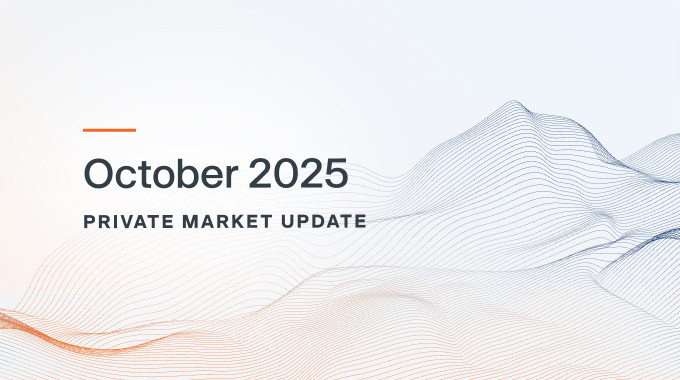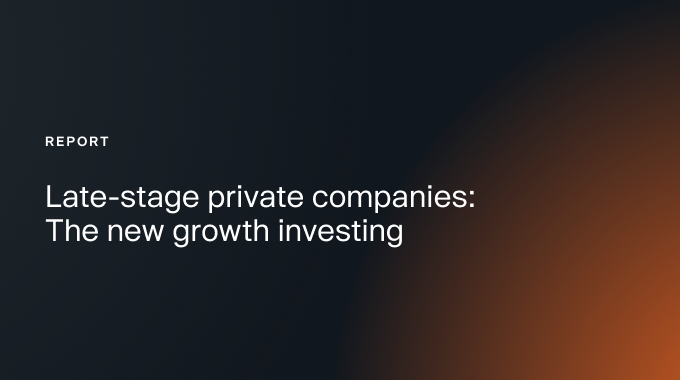Private Market Update November 2025
The private market defies shutdown and outpaces public benchmarks again
Despite enduring the longest U.S. government shutdown in history,1 the private market has shown resilience. For the second straight month, Forge’s private market indices posted positive returns and once again outperformed the public markets.
Historically, private market performance has correlated with a robust IPO environment, as seen during the post-pandemic, low-rate environment of 2020–2021. However, the current shutdown—now stretching since October 1, 2025—has effectively frozen IPO activity due to minimal SEC staffing. Yet, the private market appears largely unaffected.
Private company leaders increasingly express less urgency to pursue IPOs. What was once a badge of honor signaling arrival2 is now viewed more strategically, as companies weigh the broad availability of private capital as well as alternative liquidity options such as secondary sales and tender offers that offer liquidity while companies remain private.
Recent comments from high-profile private company executives illustrate this shift:
- “No need to go public” — Paolo Ardoino, Tether CEO3
- “No plans of IPOing before 2028” — Aravind Srinivas, Perplexity CEO4
- “If it’s in service to our clients to [go] public… then we’ll think about doing it. So we’ll always be ready for it, but it may not be that we’ll have it on a specific date” — Arjun Sethi, Kraken Co-CEO5
- “IPO is not on the cards right now” — Sarah Friar, OpenAI CFO6
- Even Goldman Sachs CEO David Solomon noted: “Today you can get capital privately, at scale... you can also get liquidity in the private markets. So the reasons to go public are getting pushed out.”7
This sentiment may help explain why the private market remains steady despite the stalled IPO pipeline.
This dynamic may also help explain the private market’s muted response to negative IPO headlines amid the government shutdown. The broad-based Forge Private Market Index (FPMI) and Forge Accuidity Private Market Index (FAPMI) reflect this resilience. The surge in IPO activity during late 2020 and 2021 corresponded with strong private market returns, while the subsequent downturn in new IPOs in 2022 and 2023 saw private market performance contract sharply.8
The private market regained momentum in 2024, but public markets continued to lead. IPO activity returned in 2025, though limited in scale and duration, with most listings clustered between March and September.
| Annual Returns | 2019 | 2020 | 2021 | 2022 | 2023 | 2024 | YTD 2025 | Oct 2025 |
| FPMI | 34.4% | 72.3% | 112.9% | -44.6% | -19.9% | 6.7% | 76.4% | 5.1% |
| FAPMI | 14.0% | 138.8% | 48.7% | -44.8% | -22.0% | 17.0% | 53.0% | 5.8% |
| SPY | 31.2% | 18.4% | 28.7% | -18.2% | 26.2% | 24.9% | 17.4% | 2.1% |
| IPOs | 18 | 18 | 51 | 3 | 5 | 18 | 19 | 1 |
Forge Data through 10/31/2025
Yet, private market performance in 2025 has been outperforming public markets even in the face of higher-than-expected tariff announcements in April,9 the broader economic implications of a prolonged government shutdown10 and now IPO uncertainty.11 The tempered IPO ambitions of private company executives, combined with sustained demand for private AI firms, suggest that the private market is increasingly decoupled from IPO activity as secondary sales and tender offers provide meaningful liquidity alternatives.12
Artificial intelligence continues to be the primary business model contributing to private market demand. In October, defense and AI firm Anduril remained one of the most sought-after private names, with its Forge Price™ rising 25.2%. Anthropic saw an identical gain, amid reported discussions for a new primary round at a $350 billion valuation13—up from $183 billion in September 2025.14 Despite a dearth of pure-play AI companies in the public market,15 the highest valued private AI companies have shown little interest in going public anytime soon,16 which may be a key factor in the positive returns of the private market as of late.
Meanwhile, in a move that may validate the lack of IPO urgency amidst private company executives, there was one technology company brave enough to test the IPO waters during the federal government shutdown. Navan,17 the corporate travel and expense company, relied on a little-known provision that allows an IPO registration statement to become effective automatically after 20 days unless the SEC intervenes.18 While longer-term results remain to be seen, shares fell 20% on the first day of trading.19
Private market continued positive trend in October and topped public market
Core private market indices continued their upward ascents this year and bested the public market for the second consecutive month. The cap-weighted FAPMI (+5.8%) edged out the equal-weighted FPMI (5.1%), but both outperformed QQQ (+4.8%) and SPY (+2.4%) in October. FAPMI received positive contributions from the outperformance of Anduril, as well as Deel (+55.7%) and Vercel (+149.0%). SpaceX (-5.2%) was a modest detractor from FAPMI performance. FPMI saw gains from EquipmentShare (+69.8%) and Anduril but was held back by Kraken (-6.8%). Overall, the private market had a strong performance in October despite concerns about the effects of the government shutdown.20
| Index | L1M | L3M | YTD | L6M | L12M |
| FPMI | 5.1% | 20.3% | 76.4% | 31.2% | 80.8% |
| FAPMI | 5.8% | 5.9% | 53.0% | 37.1% | 62.9% |
| SPY | 2.4% | 8.2% | 17.4% | 23.7% | 21.4% |
| QQQ | 4.8% | 11.5% | 23.5% | 32.6% | 30.7% |
Forge Data through 10/31/2025
October buy-side interest bounces back to mid-year levels
The percentage of buy-side indications of interest (IOIs) in the Forge marketplace rebounded to the mid-60s, similar to the levels during much of the summer. Seemingly unaffected by the government shutdown, buyer IOI activity continued at encouraging volumes and added to the data showing private market trends in a positive light.
Trade premiums move up for all percentiles, except the highest one
After reaching a new two-year high in September, the trade premium for private market shares in the 90th percentile retreated to 78% for October, down from 94% the previous month. Shares in the 50th percentile continued to march toward par, hitting –1% in October, up from –5% in September. Trade premiums/discounts in the 50th percentile have not been positive since February 2022. Getting into positive territory for the 50th percentile would be one more sign that the Great Reset is firmly behind us.



